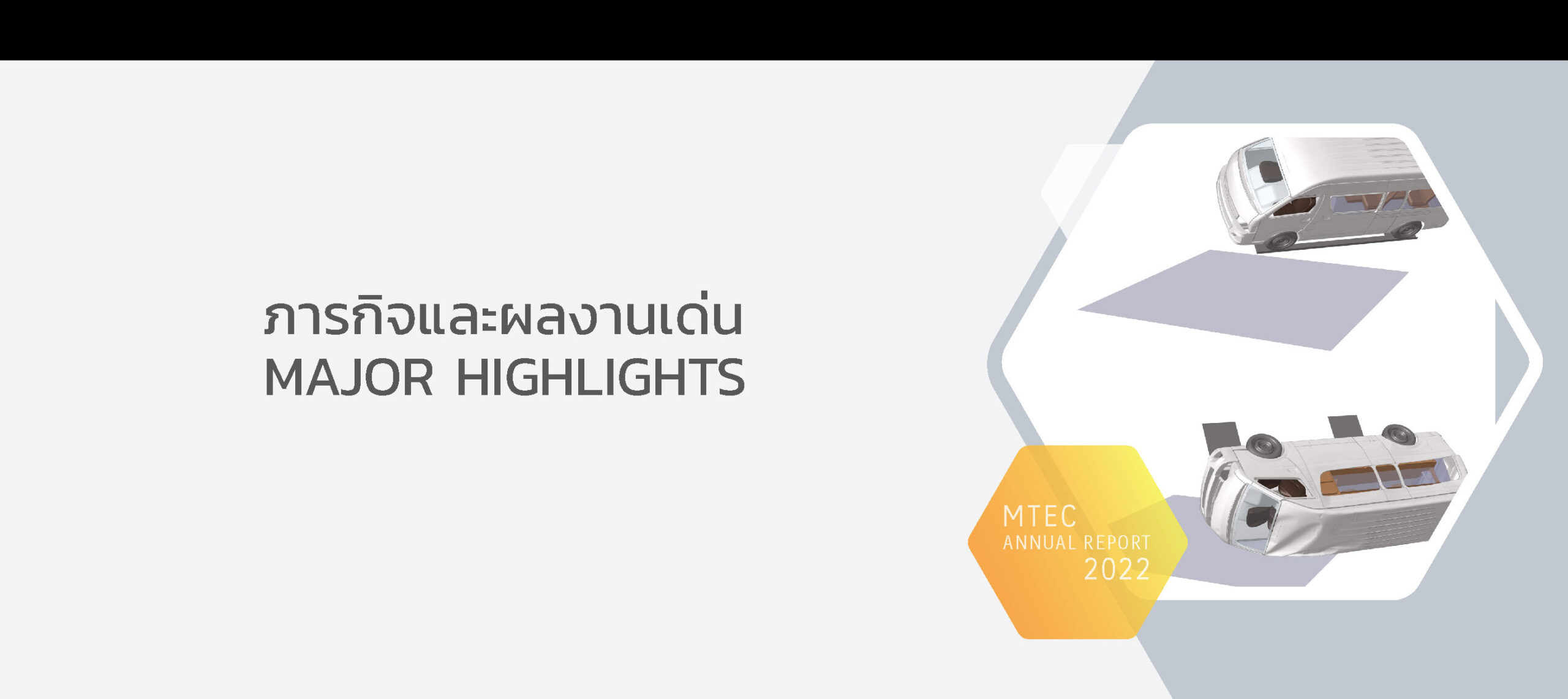
MTEC’s Activities on Standards
MTEC places importance on industrial standards by collaborating with various institutions. The implementation of these standards would help support the industrial sector and other agencies in the country to reduce trade barriers caused by standard-related measures.
Participation in the process of establishing standards
Since MTEC has researchers who have expertise in engineering design and computer-aided engineering, it is invited from various institutions, namely the Thai Industrial Standards Institute (TISI), Thailand Environment Institute, and the International Organization for Standardization (ISO) to send representatives to take part in commenting on standards draft and building a cooperation network with government and private agencies. This undertaking helps upgrade the product quality and enhance the competitiveness of Thai entrepreneurs in the international trade arena.
During the 2022 fiscal year, representatives from the Driving and Vehicle Technology Research Team of MTEC have participated as members of academic committee on the industrial product standards as follows:
- Thai Industrial Standards (TIS 2721-2560): Product standards for inflating tires, noise requirements from tires in contact with the road, surface traction on wet roads, and rolling resistance. The research team was involved in determining the exemption of rolling resistance coefficient and road noise emissions of air-inflated tires for commercial vehicles and the C3 Bias group trailers.
- Thai Industrial Standards (TIS 3224) No.2: Industrial Standard for Solid Tires No.2. The research team provided technical information, interpretations, and definitions of terms used in the tire industry. This standard defines the terminology related to solid tires used in the tire industry, including codes, symbols, and values.
- ISO 4349-1: 1985 Product standard for motorcycle tires and wheels (Design Code Series) No.1 Tire
- ISO 4349-2: 1990 Product standard for motorcycle tires and wheels (Design Code Series) No. 2 Tire Load Rating
- ISO 4349-3: 2010 Product standard for motorcycle tires and wheels (Design Code Series) No. 3 Wheel
As for the product standard of motorcycle tires and wheels, the research team was involved in designing tire codes, tire loads, and wheels, which are critical because motorcycle users and automotive industry operators must understand these codes before purchasing or producing tires for users. The code of the tire will be indicated on the side of the tire. Motorcycle tire selection, therefore, is vital to study the codes listed for smooth driving performance because the code on the tire will tell drivers the recommended width and size of the wheels, which will help them choose the right tires. Both performance and safety have passed TIS standards and operators must manufacture or import automotive products to meet these standards, as well as be able to enhance product quality with internationally equivalent standards and create market opportunities.
- Green Label Requirements for Automobile Products (Manufacturers must acquire a green label mark by Thailand Environment Institute and Thai Industrial Standards Institute (TISI)). The research team was involved in drafting the green label requirements. At present, most automotive standards do not cover environmental criteria, for example, the CO2 emission of an engine that affects the environment. Therefore, manufacturers or entrepreneurs in the automotive industry who wish to use the green label are required to control the quality of the vehicle to meet the environmental criteria or the amount of CO2 emissions as specified. The advantage of having a green label on a product is to inform the consumers that the product emphasizes environmental values so that they will take this into consideration for purchase. The producers or entrepreneurs will receive benefits in terms of profits. The more of those products are consumed, the more incentives other manufacturers to compete in order to improve the technical quality or services of their products by considering the impact on the environment as a priority. This is to achieve public acceptance and deliver long-term economic returns to the producers. Therefore, green labels are one of the tools to protect and preserve nature through production and people’s consumption.
